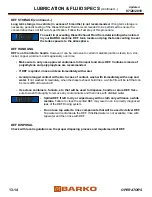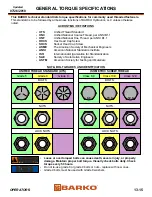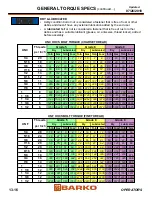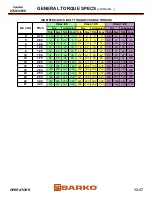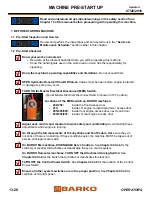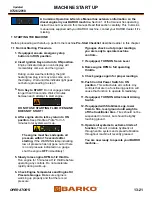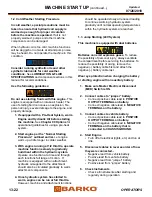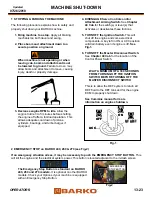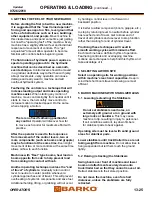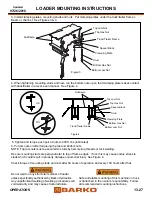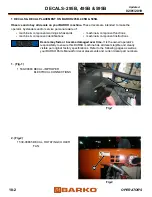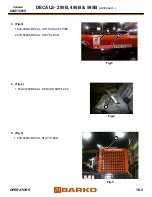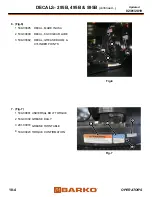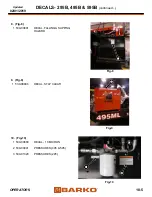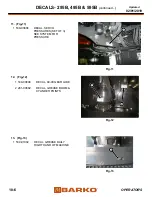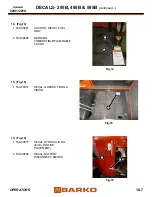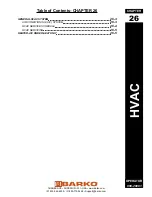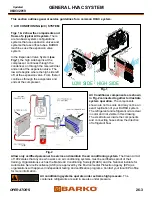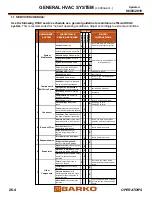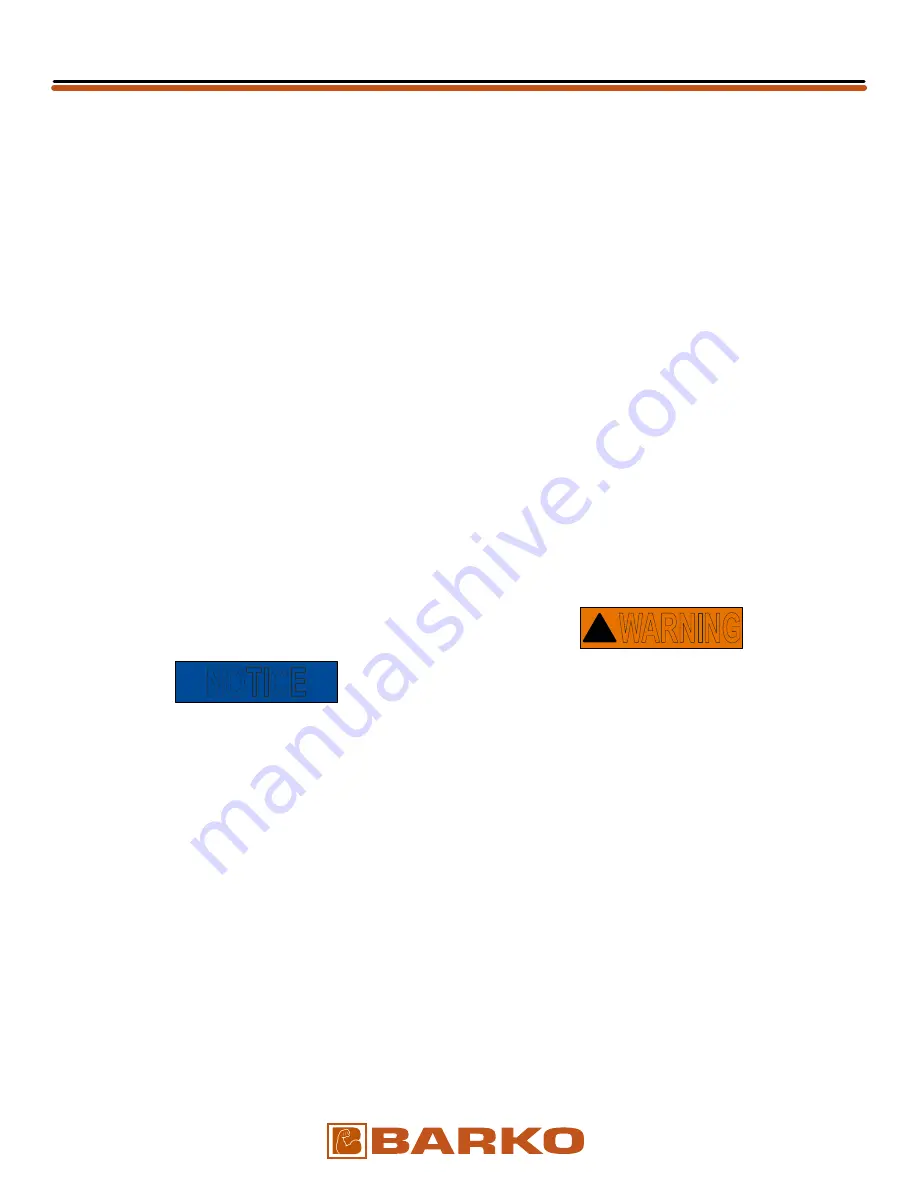
13-25
®
OPERATING & LOADING
(continued...)
3 GETTING THE FEEL OF YOUR NEW BARKO
Before starting the first job with a new machine,
it is suggested that the “now trained operator”
find a good open spot on firm, level ground that
is free of obstructions such as trees, buildings,
other equipment, and people.
Move machine to
this cleared area and spend some time just getting
to know the "operating feel" of the machine. Every
machine has a slightly different feel and individual
response to movement of controls. This "get
acquainted" time will allow operator to become
familiar with controls before beginning work.
The fluid nature of hydraulic power requires a
special operating approach to the hydraulic
machine that can be described as a smooth,
even technique.
Control levers should be moved
in a gradual, deliberate way rather than with jerky,
abrupt movements. Jerky operation can cause
damage and early wear to machine and will
overheat hydraulic system.
Feathering the controls is a technique that will
increase loading output and make operating
machine easier.
When starting any motion of
machine, move control slightly from neutral until it
starts to move, then smoothly move control to
increase motion to desired speed. Do the same
when stopping a motion.
There is no fixed feathering position for
any control.
Operator will discover how far
to move each control for maximum effort with
practice.
After the operator is used to the responses
from movement of the control levers, two or
more components (such as booms and grapple)
may be functional at the same time.
Even slight
movement of two or more controls at the same time
allows oil flow to each function.
Machines with “Heel” type booms, heel load on
boom opposite from cab to help prevent load
from coming into contact with cab.
Another operating technique involves the "end
of travel" of cylinders.
Gradually return control
lever to neutral or center position whenever a
cylinder approaches end of travel. This will prevent
overheating of system's components and save fuel.
Additional holding, lifting, or grabbing will not occur
by holding a control lever in far forward or
backward position.
It is better to allow component (boom, grapple, etc.)
to stop by returning lever to neutral before cylinder
has reached end of travel. Get to know end of
travel of all cylinders and use lever to stop function
rather than waiting for end of cylinder travel.
Practicing these techniques will result in
smooth working cycles with minimum effort.
Each machine has a definite rhythm of operation.
Feathering controls and overlapping machine
motions are techniques to help find this rhythm and
take advantage of it.
4 SELECTING A WORK SITE
Select an operating site for working positions
within machine's reach and capacities.
Keep in
mind that short boom travel and swing are most
efficient.
5 BARKO MACHINES WITH STABILIZER LEGS
5.1 Lowering (extending) the Stabilizers
Do not set stabilizers near holes, on
extremely soft ground, or on ground with
large rocks or boulders.
This may cause
machine to tip, resulting in injury to personnel.
If soil conditions warrant, lay down timbers
for stabilizer pads to bear against.
Operating site must be level with solid ground
areas for stabilizer pads.
Lower stabilizers until truck/trailer tires are not
taking weight from machine.
Do not allow tires to
hang suspended but let them touch the ground
lightly.
5.2 Raising (retracting) the Stabilizers
Swing boom over front of machine and lower
boom and attachment securely down onto
truck/trailer bed so that they cannot move at all.
Retract stabilizers to their stored position.
Do not move the machine, even for short
distances, unless the stabilizers are fully
retracted.
NOTICE
WARNING
!
07/26/2018
Updated
OPERATOR’S
Summary of Contents for 295B
Page 4: ...THIS PAGE INTENTIONALLY BLANK SUPERIOR WI USA www barko com...
Page 6: ...THIS PAGE LEFT INTENTIONALLY BLANK...
Page 27: ...THIS PAGE LEFT INTENTIONALLY BLANK...
Page 60: ...THIS PAGE LEFT INTENTIONALLY BLANK...
Page 64: ...THIS PAGE LEFT INTENTIONALLY BLANK...




